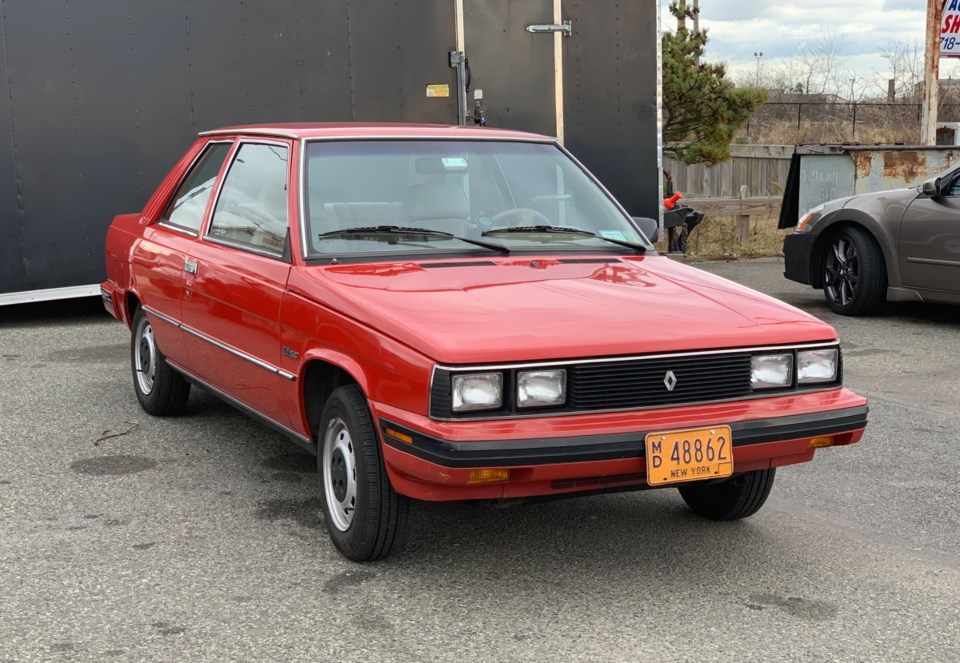American Motors Corp. was formed in 1954 by the amalgamation of Nash Motor Co. and the respected but weakening Hudson Motor Car Co. AMC carried on Nash and Hudson nameplates for a few years, but didn’t really gain success until it went to Ramblers and the Rambler name exclusively after 1957.
AMC had a few good years during the 1960s, and the purchase of Kaiser-Jeep in 1970 brought the famous Jeep name and reputation.
But life was difficult for the last surviving non-Big Three (General Motors, Ford and Chrysler) automaker. As the 1970s unfolded, relentless competition from the Big Three and imported cars found AMC so weakened that in 1979, the French Renault company began acquiring a share of the company.
Renault had been importing cars to North America early in the 20th century, and again beginning in the late 1940s when it started sending its tiny rear-engined 4CV sedan over. The 4CV was too small, but the stylish and larger Dauphine that arrived in 1956 briefly challenged the Volkswagen Beetle.
In spite of being one of Europe’s top automakers, Renault sales never flourished strongly in North America. But it persisted, and finally decided the way to succeed was to join a North American company with an established dealer network and American marketing expertise. This led them to AMC.
By that time, AMC’s offerings were down to only the subcompact Spirit, compact Concord, four-wheel drive Concord-based Eagle and Jeep sport-utility vehicles. The Eagle was the sole four-wheel-drive American car, but Spirit and Concord were becoming dated and would disappear in 1984.
In addition to AMC products, AMC-Renault would market such cars as its small Renault Le Car, compact 18 sedan and sporty Fuego coupe. But their sales were less than satisfactory, so management decided an all-new car was needed. The result was the AMC Renault Alliance. The Alliance was based on the Renault R9 that was voted the 1982 European Car of the Year. It quickly became Renault’s best-selling model ever and France’s most popular car.
With this well established European track record, it was Americanized for the North American market and built (except the French-built engine and transaxle) in AMC’s retooled plant in Kenosha, Wisconsin.
The Alliance was introduced as a 1983 model, a sturdy “three-box” four-door sedan (a two-door would soon follow) with pleasant but conservative styling.
It was a sensible car for a post-oil crisis period in which good fuel economy was highly prized. It was small at 4,160 millimetres long, but had a generous 2,469 mm (97.2 in.) wheelbase. There was ample interior space for four or occasionally five people, in part due to a cleverly engineered front seat.
Each front seat was mounted pedestal fashion on a 229-mm-wide central frame that allowed rear passengers’ feet to slide under the seat. In addition to the usual recline and fore-and-aft movements, upscale models got a curved track that allowed the seat to be adjusted in a “rocking” motion for the most comfortable position.
Power from the transversely mounted, 1.4-litre overhead-valve, inline four went to the front wheels through either a four- or five-speed manual, or three-speed automatic transmission. The engine came from the Renault Le Car and had throttle-body fuel injection, except in California, where tighter emissions standards required port injection.
Its 64 horsepower propelled the 921-kilogram Alliance to 100 km/h in a leisurely 14.3 seconds, and a top speed of 143 km/h. While a bit slow off the line, its Transport Canada city/highway fuel-consumption ratings for the five-speed were an excellent 7.3/4.6 L/100 km.
Suspension was fully independent via MacPherson struts in front and at the rear by an ingenious and very compact system of transverse concentric torsion bars and trailing arms. Steering was by rack-and-pinion.
An optional and very useful “Systems Sentry” monitored six fluids and brake pad wear and signalled the driver of required service.
The Alliance had a very successful 1983 model year, and for 1984, a hatchback version called the Encore was added. It was the same mechanically but had a wraparound rear window and folding rear seat.
In 1985, AMC-Renault rounded out the Alliance line with an image-enhancing convertible, AMC’s first soft top since 1968. It came with the new, optional single-overhead-cam 1.7-litre, 78-horsepower engine.
There were detail changes only for 1985, then for 1986 the Encore name was discontinued. By the following year, it would be all over for the Alliance.
It came when Chrysler Corp. purchased AMC-Renault in 1987, turned it into its Jeep-Eagle Division and discontinued the Alliance, ending a short but interesting Franco-American alliance.



